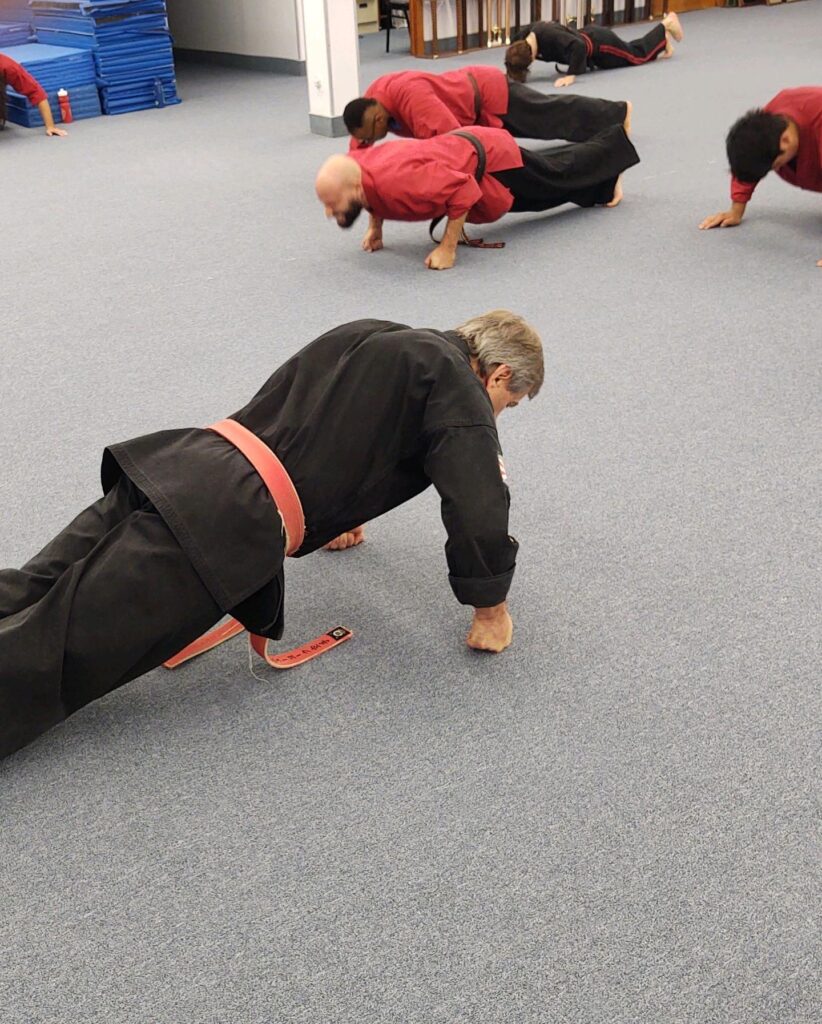Western New York Karate Center
Shihan Bill
Isshin-ryu no kamisama
Master Uezu tells one version of the origin of the Isshin-ryu symbol and Sensei Advincula has another. You don’t have to pick one or the other. I use these stories to analyze any particular version of the Isshin-ryu symbol I see and guess at whether the artist was following Master Uezu’s version or Sensei Advincula’s. Regardless, I think the image should be called, Isshin-ryu no kamisama, the guardian spirit of Isshin-ryu.
Mizu-gami – The Dream
According to Master Uezu Angi, after working out, Master Shimabuku fell asleep on a water tank in his courtyard and he began to dream. In this dream, a man entered the courtyard and challenged Master Shimabuku to a fight. Shimabuku refused and held out an open left hand (meaning peace) and shook his closed right hand in a fist over his head (meaning the ability to destroy). The man then encircled Shimabuku in flames before he disappeared. Shimabuku took a bucket of water from the tank he was standing on and poured out the water and extinguished the flames.
Mizu-gami – The Design
The next day, during a business trip to Naha (capital of Okinawa), Shimabuku was confronted with the image of Mizu-gami, the Shinto Water Goddess, hanging as a print in building and realized that the image was a parallel to his dream and incorporated Mizu-gami into the symbol for Isshin-ryu that we know to this day. Mizu-gami in the center. Three stars above representing Master Shimabuku’s three teachers. A red oval border representing the vertical punch and the flames that surrounded Master Shimabuku in the dream. An ocean symbolizing purity. And a dragon representing good fortune.
Megami – The Dream
According to Sensei A.J. Advincula, the US Marine that designed the original Isshin-ryu patch, Master Shimbuku’s dream was of a spirit, a megami, who spoke to him and said, “you have new ideas on how to improve your techniques. Go ahead and teach them publicly.”
Megami – The Design
Later, Master Shimabuku passed a shop in Shuri and saw a picture similar to the megami from his dream, Ryuzu Kannon, the Buddhist Goddess of Mercy, who is sometimes depicted as a woman riding on a dragon. Master Shimabuku began studying Okinawan mysticism with his uncle, Ganeku Shinko, when he was 13 and continued to train with him in Okinawa mysticism until he was 20. Ganeku hoped that Master Shimabuku would become a sanjinso, a fortune teller, like him, who uses the I Ching and other Chinese occult lore to predict personal futures (Ganeku also introduced Master Shimabuku to To-de and thus Master Shimabuku discovered his life’s calling). Thus, Shimabuku recognized Ryuzu Kannon and knew it was she who had visited him to inspire him to start his own dojo. Master Shimabuku borrowed the image and took it to an artist, Nakamine Shosu, to create the image of the Isshin-ryu no kamisama (Protecting deity of Isshin-ryu), a woman as the upper body and lower body as that of a dragon; the system being both soft and gentle like a woman and hard and fierce like a dragon. The border is to be the Isshin-ryu vertical fist in gold. There are three to five stars representing ALL of Master Shimabuku’s teachers. The dragon represents Master Shimabuku whose karate name means, Dragon Man. The ocean is typhoon which stands for ever present danger and the megami, as the protecting deity, is calm in the heart of the storm.
